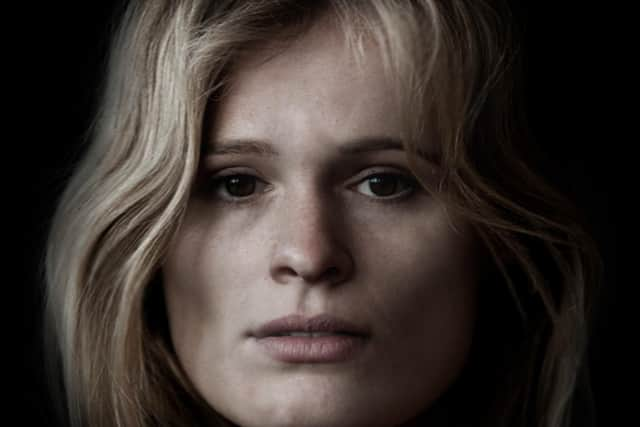Digital project brings Scots face to face with Whithorn’s medieval dead
Now a remarkable three dimensional likeness of a young woman buried at Whithorn Priory in Galloway has been released as part of a project and exhibition designed to bring modern-day Scots face to face with their medieval precursors.
The women, who was in her 20s when she died sometime in the 14th century, was buried alongside laypeople in what later became the Glebe field, part of the millennium-old monastic settlement.
Advertisement
Hide AdAdvertisement
Hide AdHer skull was subjected by 3D scanning by Dr Adrian Evans, an archaeological scientist at the University of Bradford, before the image was fully reconstructed and given a lifelike face by Dr Chris Rynn, a cranio-facial anthropologist. The 3D likeness was then animated, with voiceovers provided by Glasgow-based Urbancroft Films.


Those behind the project say the final product offers a new way of looking at Scotland’s medieval past and Whithorn’s rich heritage.
The digital reconstruction of the woman, whose identity remains a mystery, is one of several 3D models that have been created. Others include the reconstruction of Bishop Walter of Whithorn, who died in 1235.
The project to reconstruct the faces began as part of a revisiting of Whithorn’s vast archaeological archive, known as Cold Case Whithorn. This has resulted in 52,000 items deriving from Whithorn’s excavation being re-housed and re-examined and, in some cases, studied in much greater depth.


Dr Adrian Maldonado, an expert in early medieval archaeology at National Museums Scotland, who leads the Cold Case Whithorn initiative, said: “The famous excavations at Whithorn were a huge leap forward in the archaeology of Christianity, and amazingly, they continue to bring new insights into life in medieval Scotland.
“These graves were discovered decades ago, when they could not have anticipated the kinds of questions we can now ask. In addition to generating critical new scientific data about health and diet in the past, the people of medieval Whithorn continue to inspire stories.”
The work to better understand those who have their final resting place at Whithorn has also raised new questions.
The woman who is the focus of the new dignitisation project was buried on a bed of shells. No one is sure why.
Advertisement
Hide AdAdvertisement
Hide AdElsewhere at Whithorn, one man with a cleft palate was buried in an area close to the high altar of the cathedral, indicating he was a cleric of high status.
Yet it was often thought that someone with a cleft palate would not be able to rise through the religious hierarchy because of the difficulty they would have intoning the Mass.
The digital reconstructions will be on show as part of a Whithorn Trust event, Bishops, Bones and Burials, taking place during the Wigtown Book Festival.
Julia Muir Watt, the trust’s development manager, said: “The chance to see and imagine that we can hear these three people from so many centuries ago is a remarkable way to help us understand our history and ancestry.
“It’s always a challenge to imagine what life was really like in medieval times, and these reconstructions are a brilliant way to engage with who these people from our past really were, of their everyday lives, their hopes and their beliefs.”
Comments
Want to join the conversation? Please or to comment on this article.
